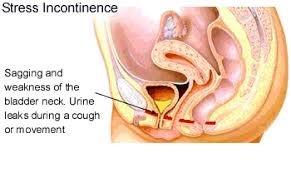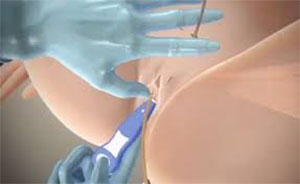Bladder spillage, otherwise called urinary incontinence (UI), is the loss of bladder control for automatic loss of urine. Truth be told, it’s feasible that you or somebody you know—your mom, sister, or closest companion—is unobtrusively adapting to this possibly humiliating issue. On the off chance that you believe you're encountering side effects of incontinence, we may have the capacity to help you recover your life.

Ladies experience UI twice as frequently as men. Pregnancy and labor, menopause, and the structure of the female urinary tract represent this distinction. However, both ladies and men can get to be incontinent from neurologic damage, conception imperfections, stroke, different sclerosis, and physical issues connected with maturing.
More established ladies experience UI more regularly than more youthful ladies. However, incontinence is not inexorable with age. UI is a restorative issue. Your specialist or medical caretaker can help you discover an answer. No single treatment works for everybody, except numerous ladies can discover change without surgery.
Incontinence happens on account of issues with muscles and nerves that assistance to hold or discharge urine. The body stores urine water and squanders evacuated by the kidneys-in the bladder, an inflatable like organ. The bladder unites with the urethra, the tube through which urine leaves the body.

In the case of hacking, giggling, sniffling, or different developments that put weight on the bladder cause you to hold urine, you may have stress incontinence. Physical changes coming about because of pregnancy, labor, and menopause regularly cause stress incontinence. This sort of incontinence is normal in ladies and, much of the time, can be dealt with.
On the off chance that you lose urine for no obvious reason after abruptly feeling the need or inclination to urinate, you may have urge incontinence. A typical reason for urge incontinence is improper bladder compressions. Anomalous nerve signs may be the reason for these bladder fits.
Overactive BladderOveractive bladder happens when anomalous nerves send signs to the bladder at the wrong time, bringing about its muscles to crush abruptly. Voiding up to seven times each day is ordinary for some ladies, however ladies with overactive bladder may observe that they must urinate considerably all the more oftentimes.
Signs and Symptoms associated with stress incontinence:


required. Your specialist is prone to recommend the minimum intrusive medications first and proceed onward to different alternatives just if these procedures are not effective.
Behavioral strategies
This involves bladder preparing, to postpone urine after you get the desire to go. You may begin by attempting to hold off for 10 minutes each time you feel a desire to urinate. The objective is to stretch the time between the visit to the washrooms until you're urinating just every two to four hours. Two fold voiding means urinating, then holding up a couple of minutes and attempting once more.
Pelvic floor muscle works out ( Kegel Exercise )
It takes deligence to distinguish your pelvic floor muscles and figure out how to contract and unwind them. Here are a few pointers:
Try not to make it a habit for utilizing Kegel activities to begin and stop your pee stream. Doing Kegel activities while discharging your bladder can really debilitate the muscles, and additionally prompt inadequate exhausting of the bladder — which expands the danger of a urinary tract infection.
Electrical incitement
MORE EXPLANTION NEEDED Anodes are incidentally embedded into your rectum or vagina to fortify and reinforce pelvic floor muscles. Delicate electrical incitement can be successful for anxiety incontinence and urge incontinence; however you may require numerous medicines more than a while. Electrical incitement of the bladder should likewise be possible by setting terminals under your skin, either through your leg or into your lower back. This is typically accomplished for serious urge incontinence or overactive bladder that hasn't been helped by other treatment.
Posterior tibial nerve stimulation (PTNS) is finished by embeddings a little anode through the skin of your lower leg. The terminal is associated with an electrical stimulator (beat generator) outside your body. The stimulator sends heartbeats to the anode, which fortifies the tibial nerve in your leg. That electrical current then influences the nerve in your lower back that controls bladder and pelvic floor capacity
Sacral nerve stimulation (SNS) is finished by putting an electrical stimulator under your skin over your backside. This stimulator resembles a pacemaker. It is appended to terminals that send heartbeats to a nerve in your lower back (sacrum). The sacral nerve assumes a part in bladder stockpiling and purging.